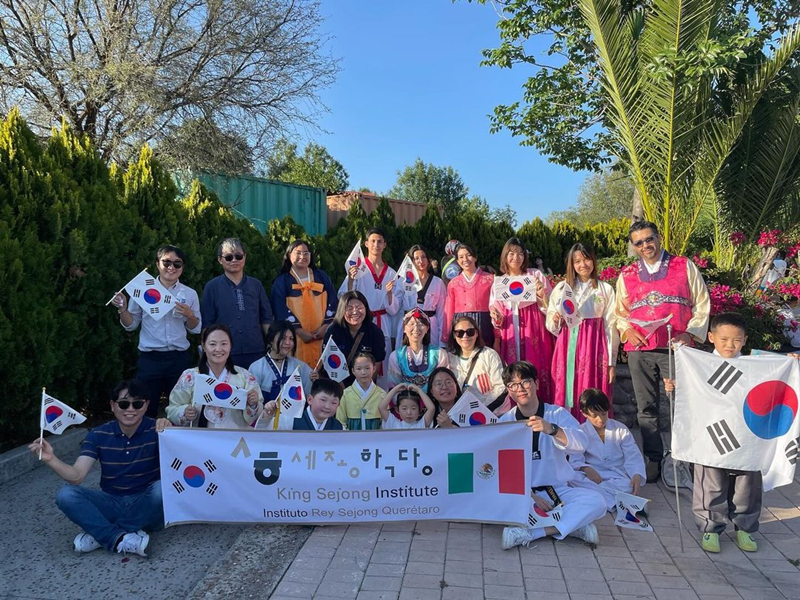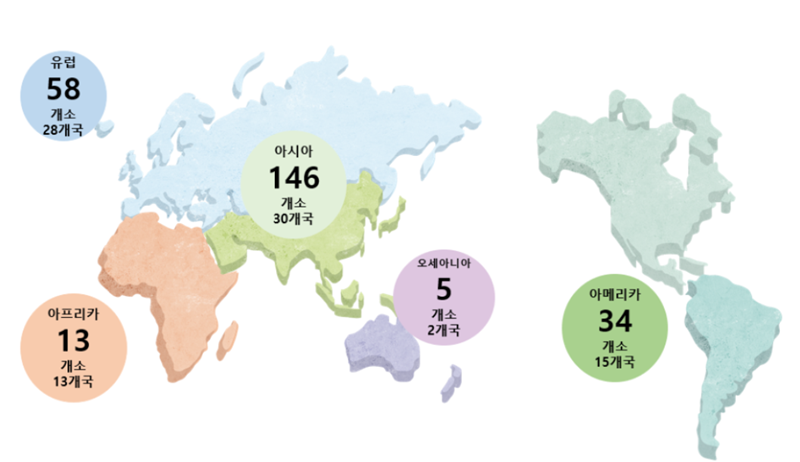
King Sejong Institute this year will raise its combined number of overseas branches to 256 in 88 countries. Shown are students and teachers on Feb. 26 at the institute's branch in Santiago de Queretaro, Mexico, to promote both Korea and the franchise at an international cultural festival held at Bicentennial Park of Queretaro. (Santiago de Queretaro branch's Instagram page)
By Hong Angie
With the popularity of Korean content spreading in Europe, Asia and Africa, surging demand for Korean-language education has fueled a jump in the number of global branches of King Sejong Institute, which teaches the Korean language and culture.
The Ministry of Culture, Sports and Tourism on June 24 announced that along with the King Sejong Institute Foundation, it approved the opening this year of 18 new centers in 15 countries.
Thus the foundation will raise its branch total to 256 in 88 countries to allow more people around the world to learn Korean.
Among the 18 forthcoming locations, 10 will be in eight Asian states including Nepal and Saudi Arabia; six in Europe such as Germany, Sweden and Italy, and one each in Australia and Cuba.
Among countries without a branch, Nepal and Cuba will be the first to get them this year. The South Asian country will get its center in its capital of Kathmandu to promote Korean-language education and culture there.
Nepal is a participant in Korea's Employment Permit System with rising demand for Korean-language instruction, but lack of the proper educational infrastructure hampered King Sejong's expansion there despite surging demand for such instruction.
Cuba, which formed official ties with Korea in February, will get its branch in its capital of Havana to spread the Korean language and serve as a center of cultural exchange in Central and South America, a region with high demand for learning Korean.
After finishing mandatory procedures such as signing business contracts, all of the new branches will undergo a six-month pilot run before official operations start next year.
"This August, we will announce an innovation plan for King Sejong Institute containing support and management plans for branches by region," a ministry official said. "By doing so, we will firm up the basis for the sustainable diffusion of the Korean language and culture."
Debuting in 2007 with 740 learners, the institute last year saw its student population reach 216,226 worldwide.

This map shows the global distribution of branches of King Sejong Institutes. (Ministry of Culture, Sports and Tourism)
shong9412@korea.kr